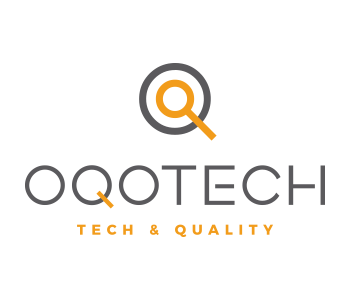
TOP tools for analysing user requirements
We present the VSM (Value Stream Mapping) tool, useful for the analysis of user requirements in the computerization of systems


The creation and analysis of user requirements makes it possible to specify the current and future scope of the computerized system at the operational level (for the end-users who use it), functional level (records generated, in-process controls, results obtained and safety) and finally the regulatory level (in accordance with Annex 11 of the Good Manufacturing Practices).
The definition of user requirements, for example for a manufacturing company, is divided into the following processes:
- Purchases and returns to suppliers.
- Logistics.
- Quality Control.
- Quality assurance.
- Technical Management.
- Production.
- Maintenance.
- Finished product shipment and customer returns.
User Requirements
Existen muchos tipos de requerimientos de usuario a considerar:
- Technological: specifying the development of technology, the form of communication with other equipment, etc.
- IT: detailing the software platform (operating systems and databases), server characteristics, virtualization and also interfaces with other IT systems.
- Functional: determining the system’s areas of operation, processes to be computerized and main functionalities. Specifying its degree of automation, controls, and verifications in the process to be carried out, processes that can be triggered such as alerts, the printing of reports or labels, communication with other systems, etc.
- Regulatory: throughout the life cycle of the data, to ensure traceability, security and computerized processes in accordance with Annex 11 of the GRC.
- Data integrity: focused on the entire life cycle of the data, to ensure the ALCOA rule that requires that they are attributable, readable, simultaneous, original, accurate, consistent, complete, enduring and also available.
Once the definition of needs has been carried out, it is necessary to weigh up the importance of the different types of requirements. In the following example, we see how to apply the weighting criteria to the requirements:
| Type of requirement | % weighting |
| Technological | 10 |
| Computer Science | 15 |
| Functional | 25 |
| Regulatory | 25 |
| Data integrity | 25 |
User requirements analysis
In Oqotech, the workshop that allows us to analyze user requirements and extract all the company’s information, as well as to generate a user requirements report is the VSM – Value Stream Mapping – workshop. This workshop consists of specifying in a graphic and detailed way in writing by process area analyzed: the profiles of the work stations involved, the current operation, the use of the computerized system in the process and the functionality expected from the ERP (in-process controls, results, and safety). As well as identifying functionalities of the standard computerized system and developed to measure (if applicable).
It is a workshop that needs very few tools, is very visual and also obtains great conclusions. Also needed: a paper tablecloth, post-its of different colors and markers.
Workshop steps
1. With the multidisciplinary team present, a list of processes is generated that we must also know. For each one, a panel is generated. In the panel the process is identified, the pilot is determined (person with more management of the process) and finally, limits are established:
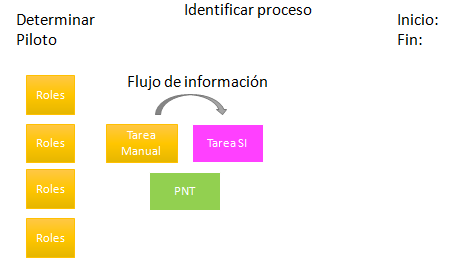

2. Next, the roles involved in the process are identified, those that the team identifies at the beginning. Then the process is painted, differentiating manual tasks (yellow post-it) and computerized tasks (pink post-it), information flows and process detail SOPs (green post-it).
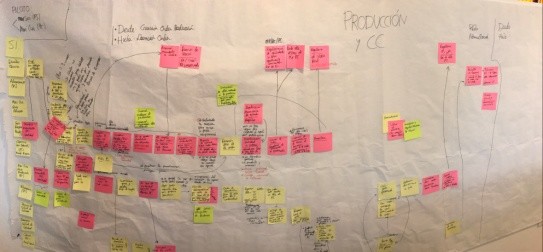

Therefore, this workshop promotes knowledge between departments, the collective analysis of processes and it is possible to detect deviations, reprocessing and lack of documentation.
From the workshops executed of the analyzed processes it is possible to issue a list of needs:
- Processes to be computerized.
- Controls to be implemented.
- Processes already computerized, to be improved.
- Records to be generated.
- Processes that need to modify the operation.
- Notices and reports to be generated.
3. First of all, all requirements have to be expressed, from all the points of view of the validation team. Then, they must be classified according to their criticality as essential, recommendable and dispensable. As well as establishing the priority weight within the same classification level, using a numerical scale from 1 to 9, with 9 being the highest priority:
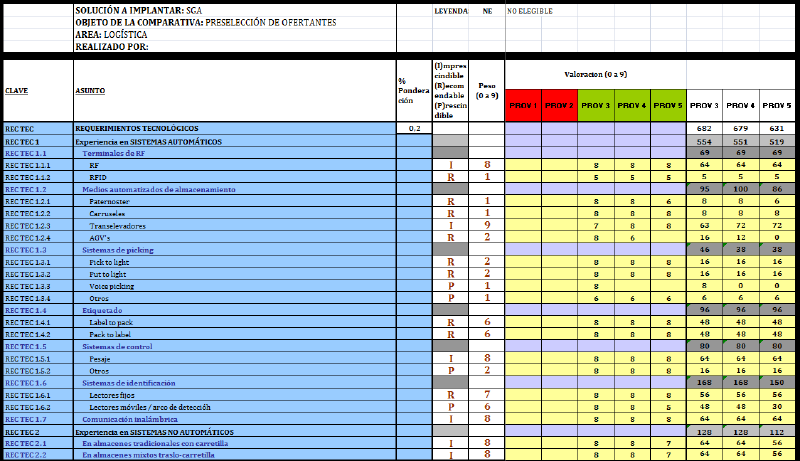

The result of applying the previous steps is a list of quantifiable requirements, prioritized by consensus, approved and evaluated by the personnel of the different areas of the organization through a validation team.
In conclusion, in the following link, you can continue learning about how we help our clients to Build a Computerized System.
